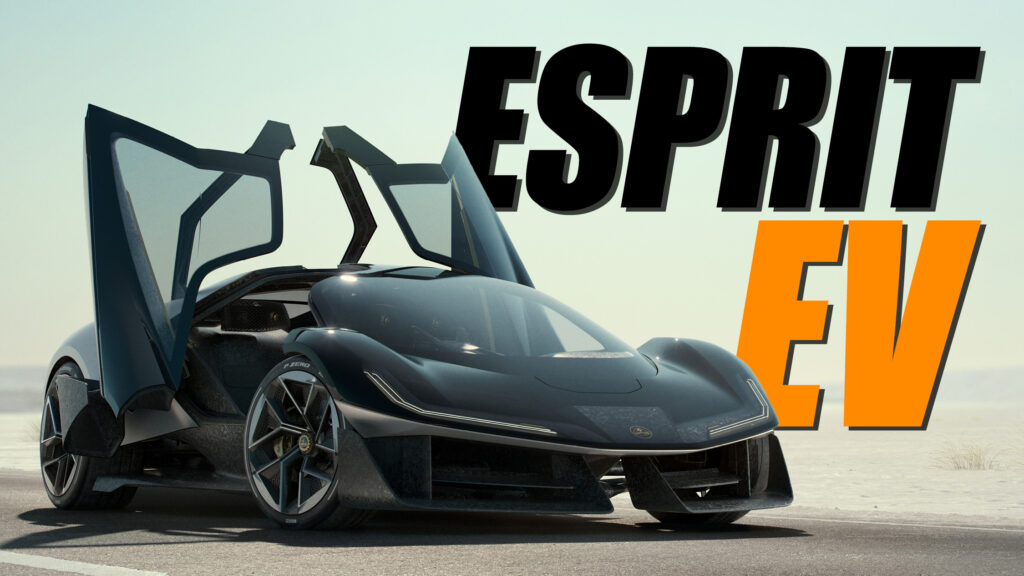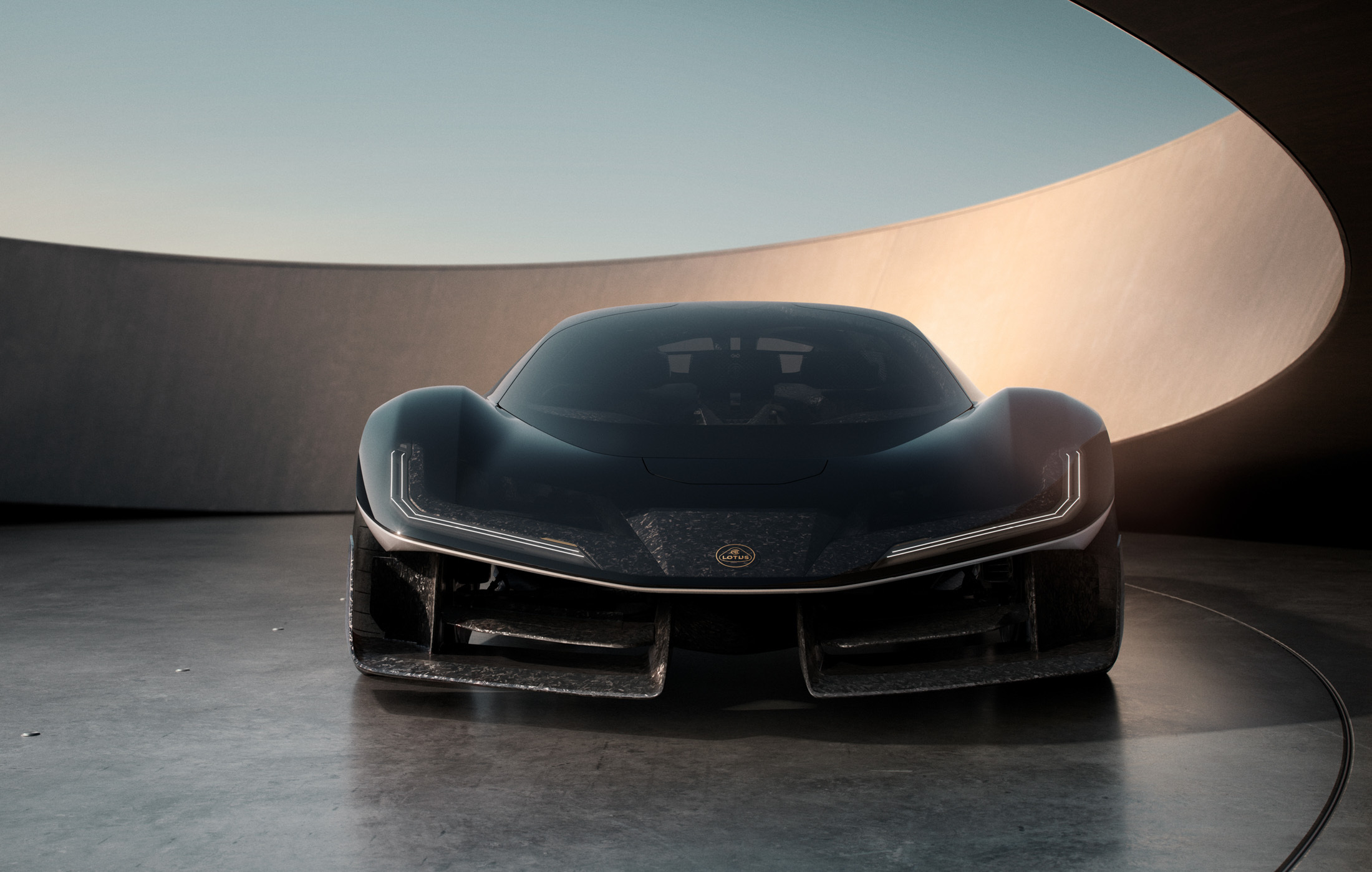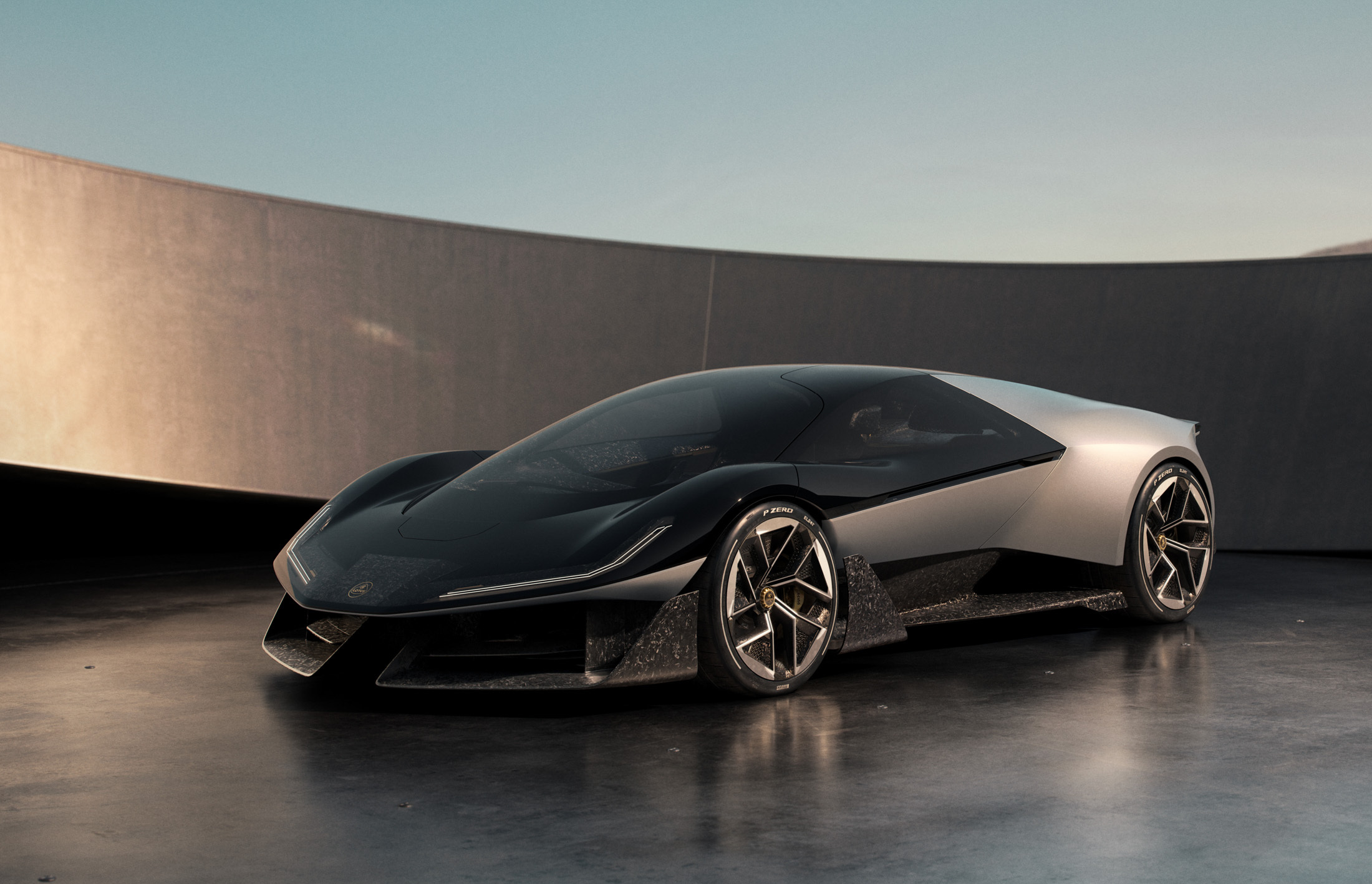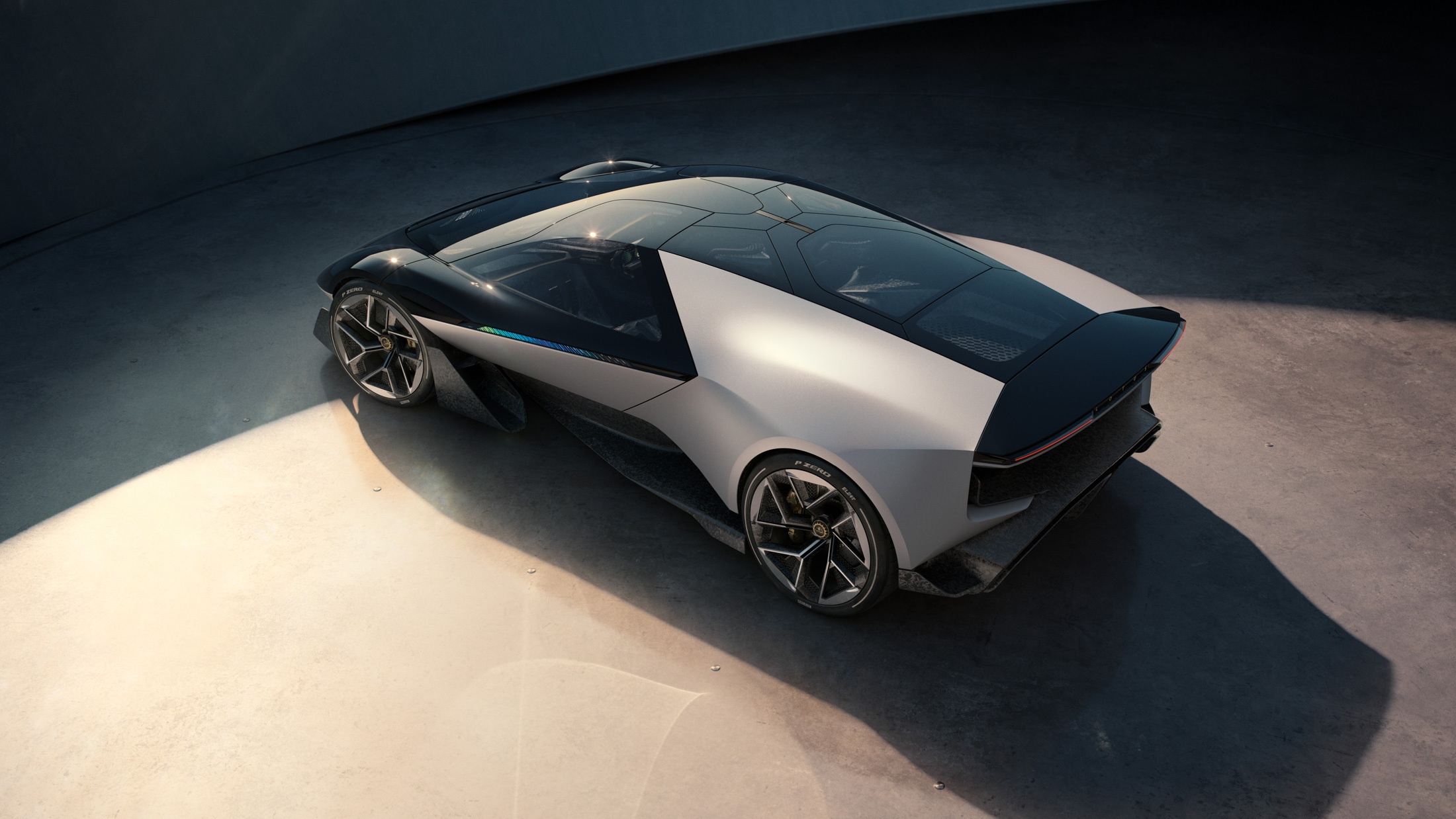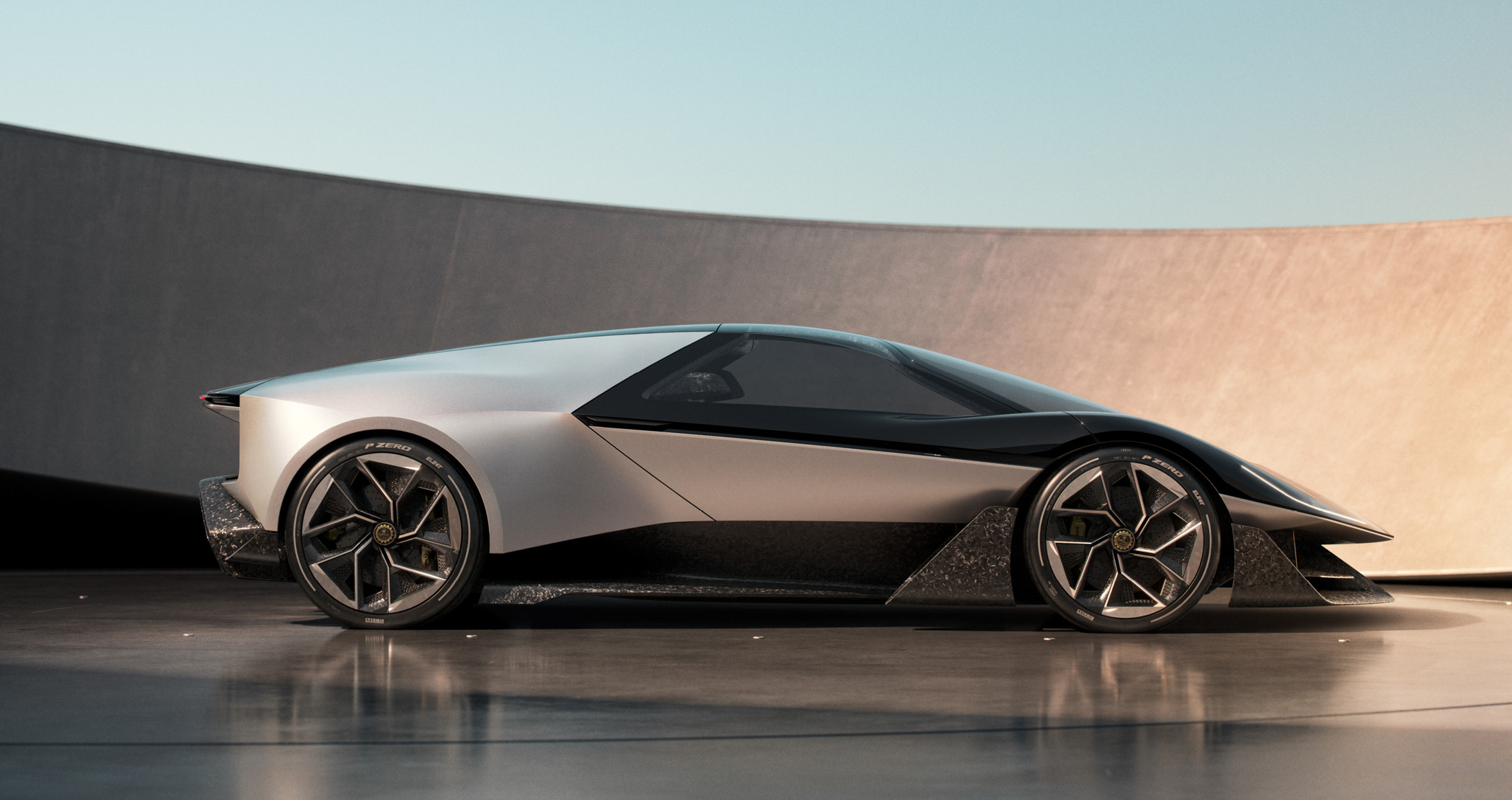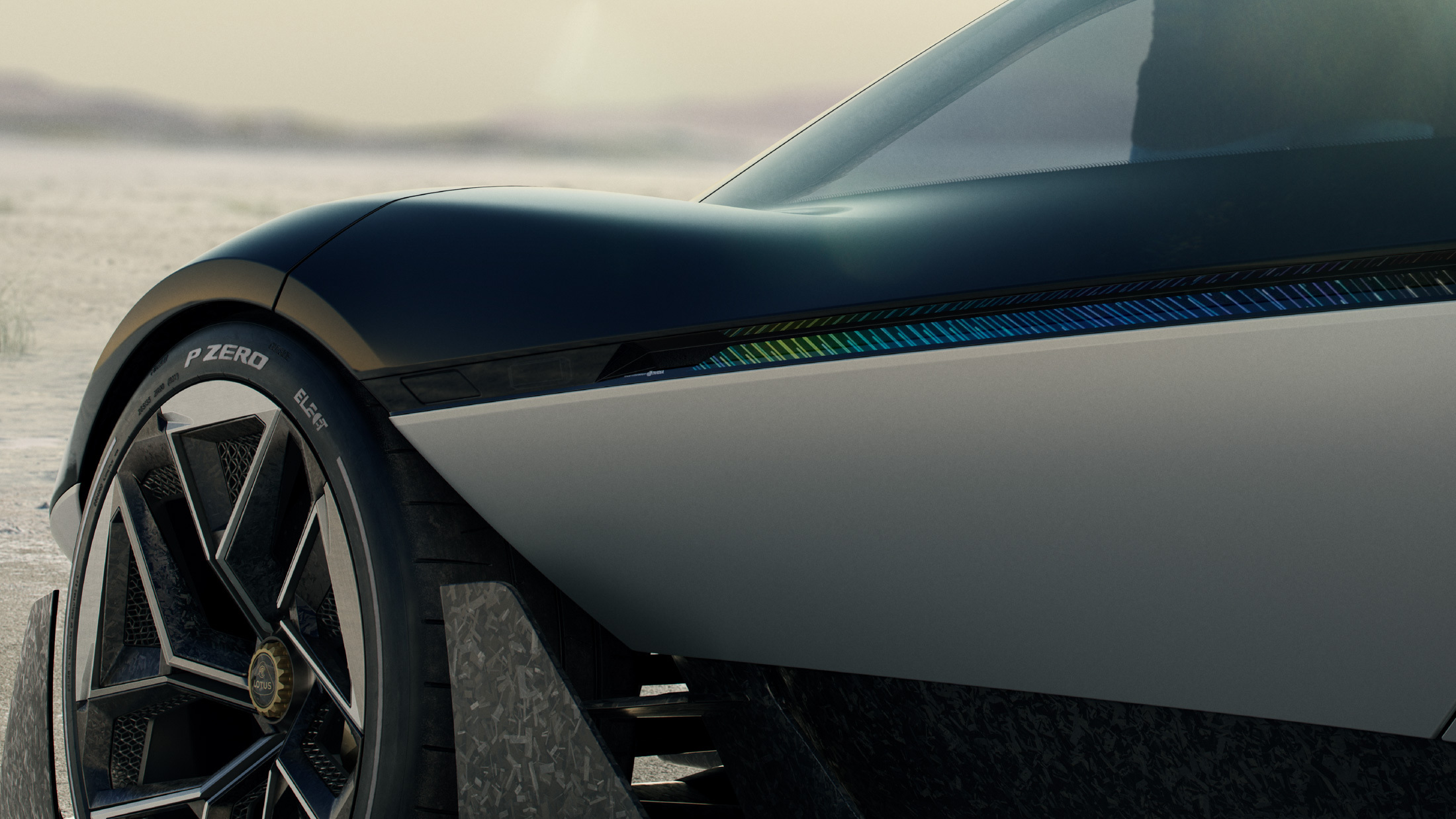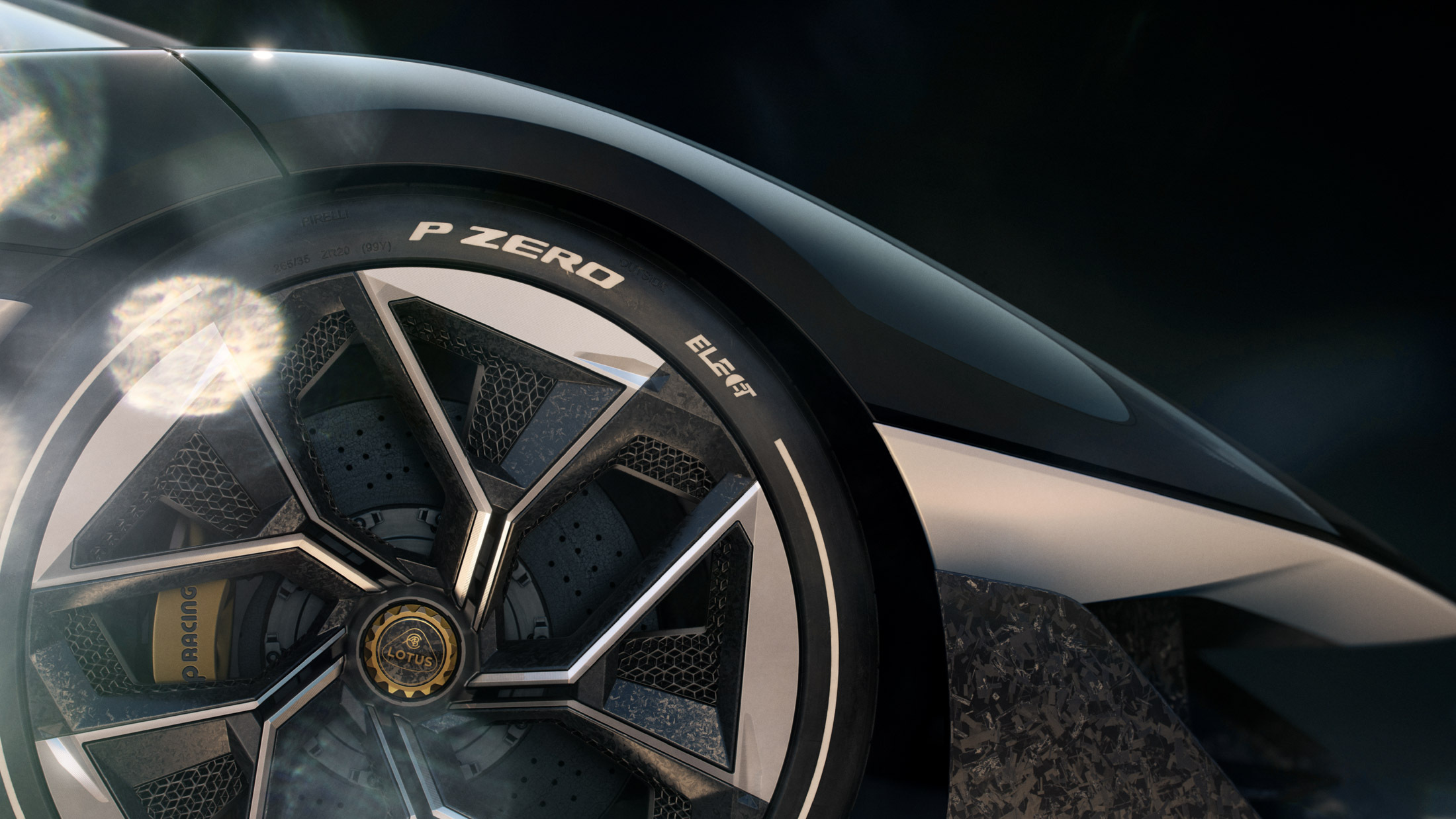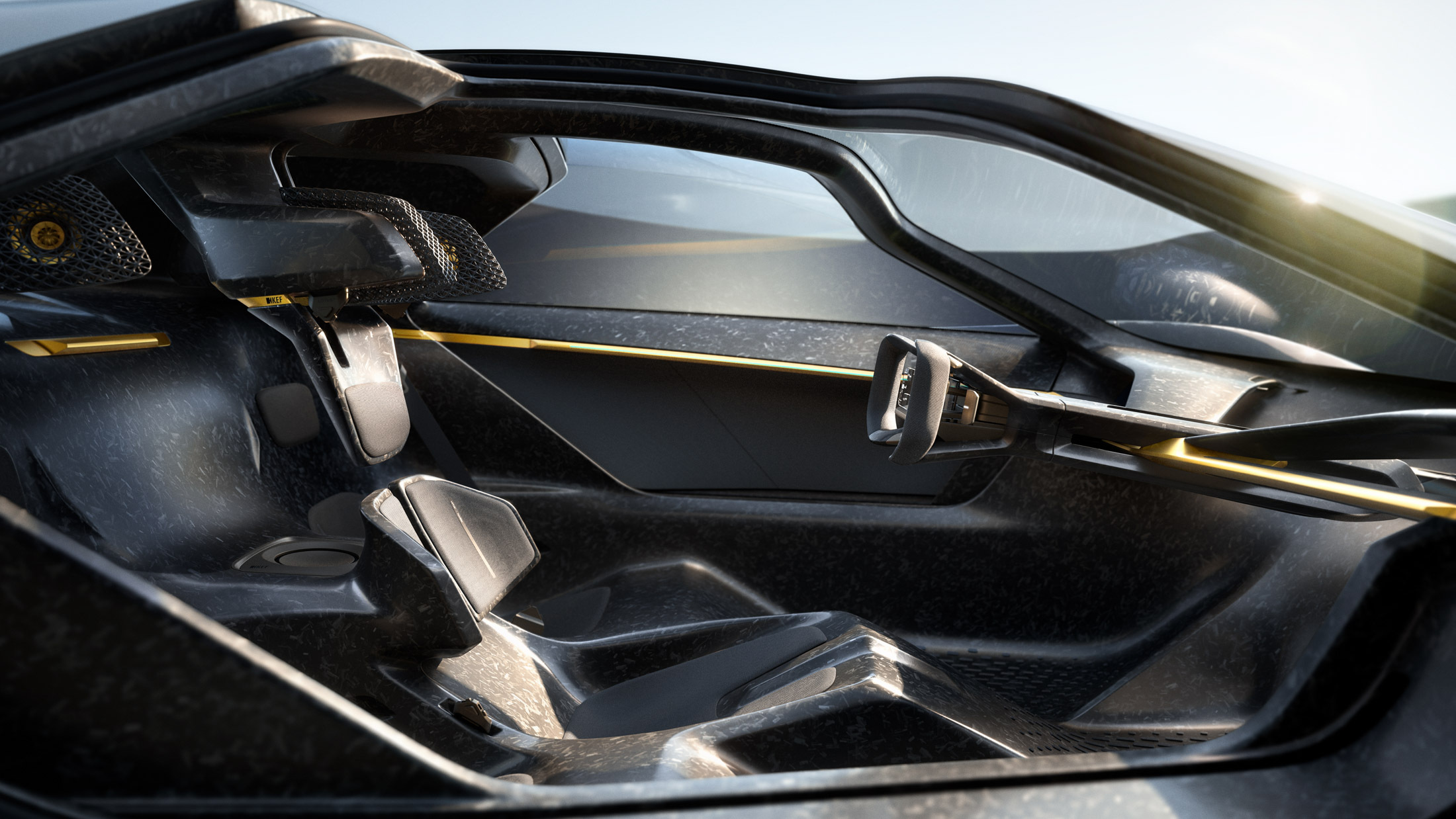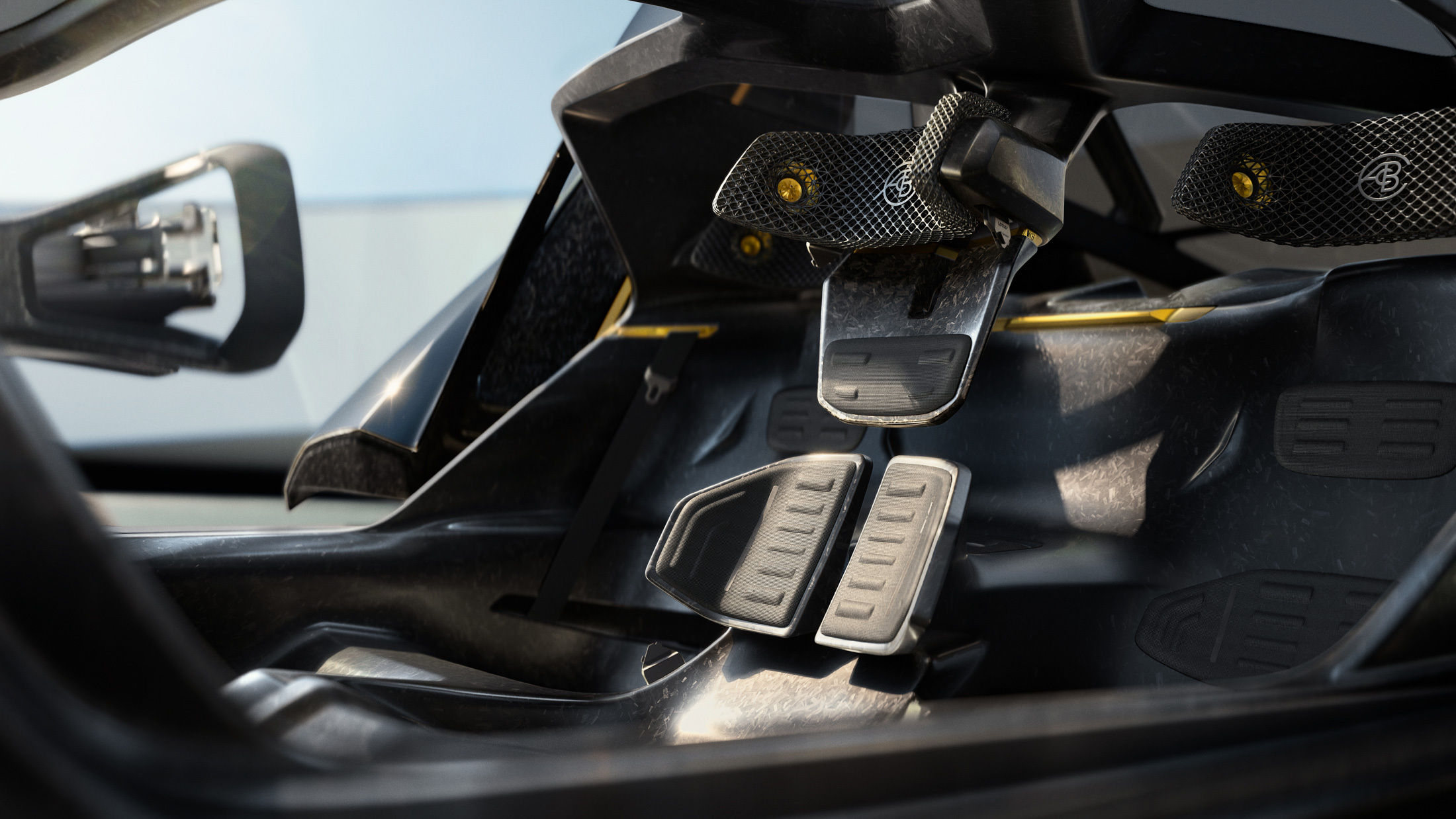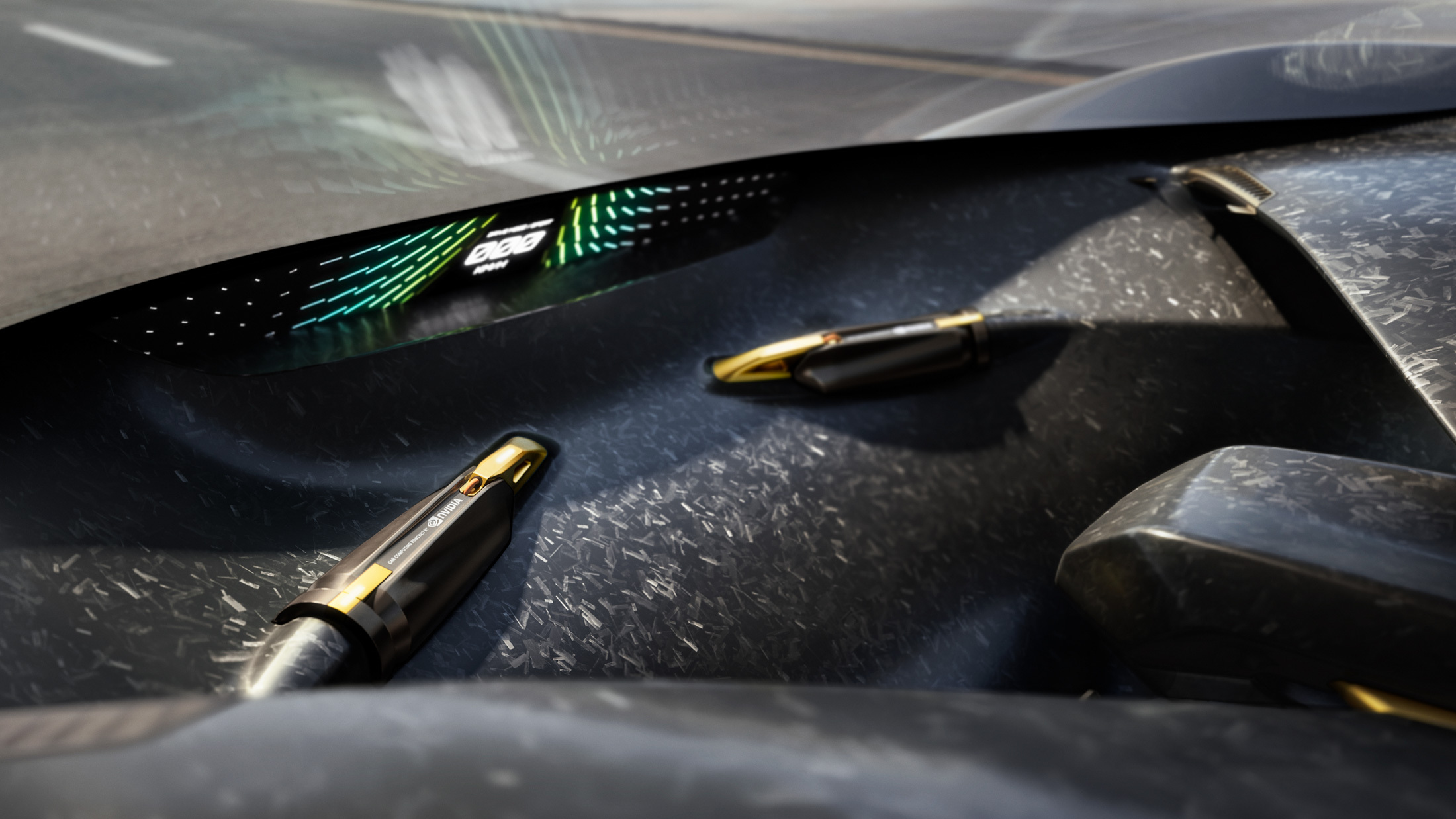- Lotus has unveiled the Theory 1, an electric concept that references the original S1 Esprit.
- The all-carbon, 3,500-lb supercar has butterfly doors, a McLaren F1-like three-seat layout, and gives haptic prompts through the seat and wheel.
- A bi-motor drivetrain provides 986 hp for a 199 mph top speed and sub-2.5-second zero to 62 mph time.
Take a good look at the new Lotus Theory 1 concept because this is Lotus dropping some big hints about the next generation of Chinese-British sports cars.
An electric supercar with a McLaren F1-style three-seat layout, this junior Evija is equipped with a dual-motor all-wheel drive powertrain that makes a total of 986 hp (1,000 PS). Lotus says 62 mph takes less than 2.5 seconds, the top speed is 199 mph (320 kmh) and that at more sensible speeds the 70 kWh battery delivers a 250-mile (402 km) range.
Related: Lotus Eletre Priced At A Shocking $229,900 Due To New Chinese EV Tariffs
The carbon body helps keep the weight down to less than 3,520 lbs (1,600 kg) and the Theory 1 features a ton of visible carbon inside and out that, together with the butterfly doors, make for a really strong visual package. It looks leaner, tighter and prettier than the bigger Evija, and although the body features plenty of curves, it’s obvious that Lotus’s designers were thinking of the original 1977 S1 Esprit when they put pen to digital paper.
Lotus doesn’t call it an Esprit, but you can imagine a production version pulling off the famous badge, and it’s easy to see how many of the technical and design ideas might make their way onto a supercar you will be able to buy a few years down the line.
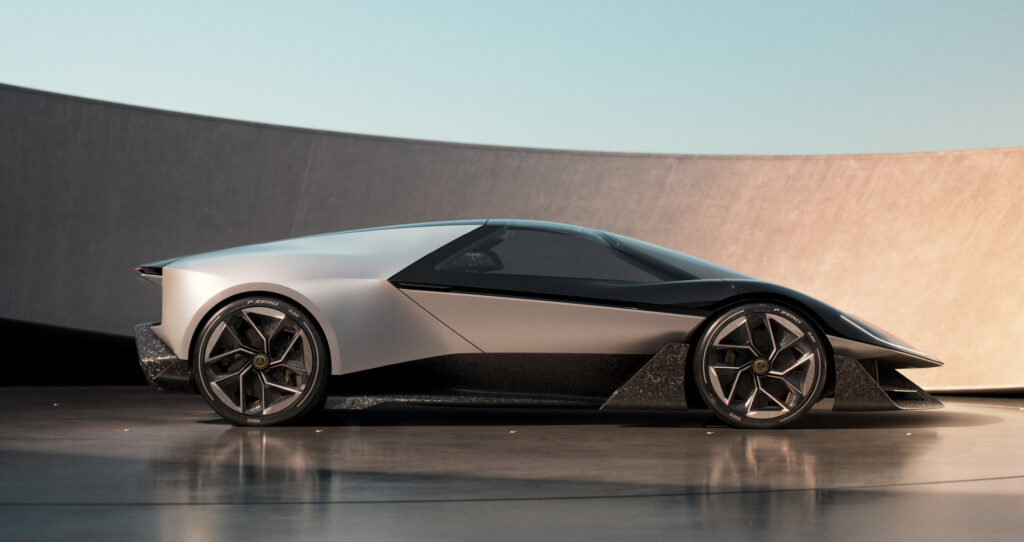
One of those innovations we might see on a street-driven Lotus is Lotuswear, a system of adaptive textile-covered robotics developed with Motorskins that can provide haptic feedback to the driver through the seat and steering wheel. Tiny inflatable pods provide pulses, for example, to tell the driver when to make a turn, or they might function as buttons.
Another piece of tech present – and one that might alarm Lotus fans who love the unfiltered steering feel of cars like the Elise – is steer-by-wire. Lotus says it gives drivers the ability to adjust the steering ratio and feel, though that’d be virtual feel and so sets our alarm bells ringing. More likely to appeal to Lotus diehards is the use of the motor and battery assembly as a stressed member capable of taking forces directly from the suspension, something the Lotus 49 F1 car’s V8 did in the late 1960s.
And one feature that’s already on the road now is the Pirelli P Zero Elect tires, which were developed to reduce rolling resistance and boost range by up to 10 percent. They’re currently fitted to the Lotus Eletre SUV and Emeya four-door coupe, two cars that wear Lotus badges, but don’t seem much like Lotus products to many enthusiasts. The Theory 1, on the other hand, despite being an EV, feels like the kind of Lotus – (relatively) light, pure, driver-focused – that’s true to the badge, and something we can all get behind.




